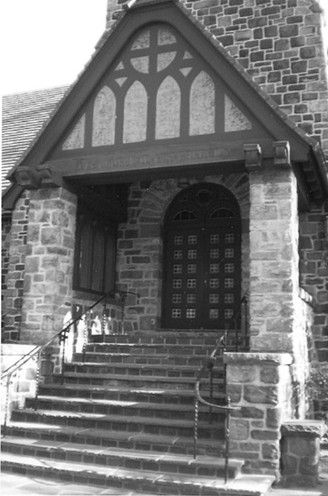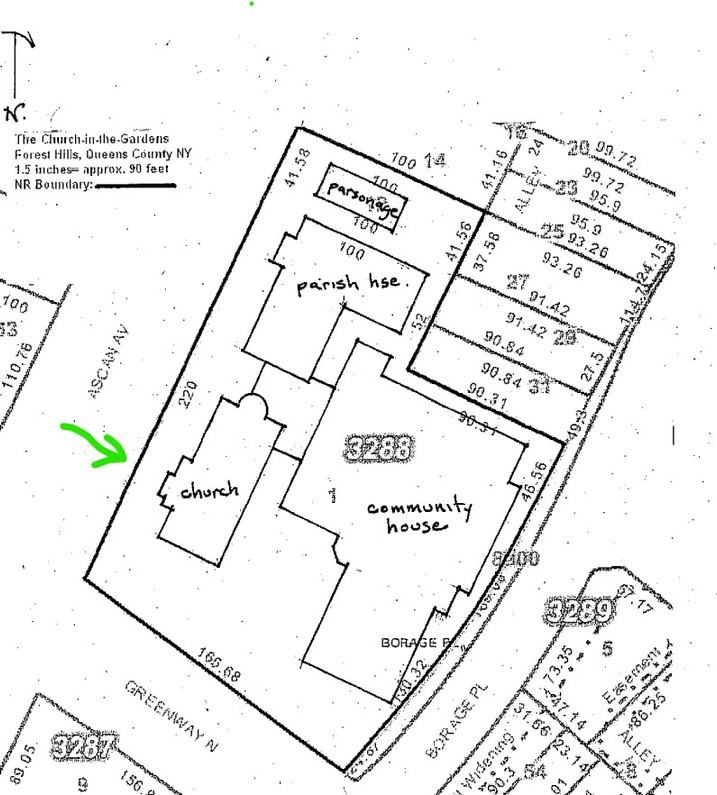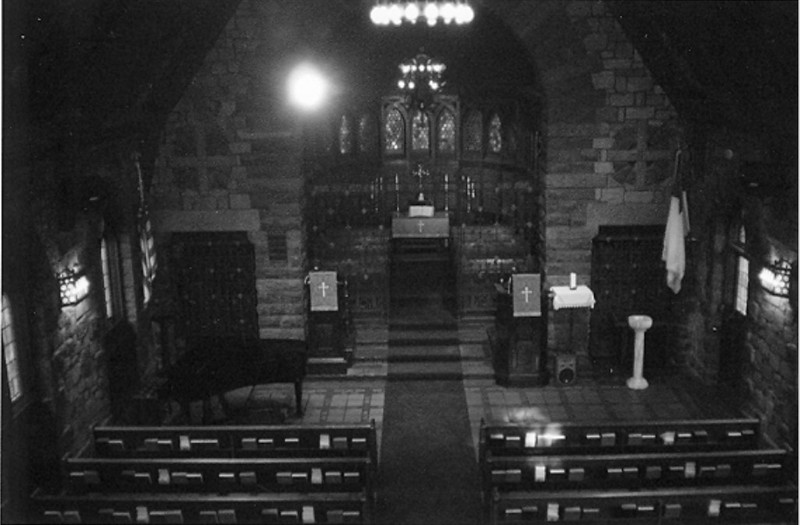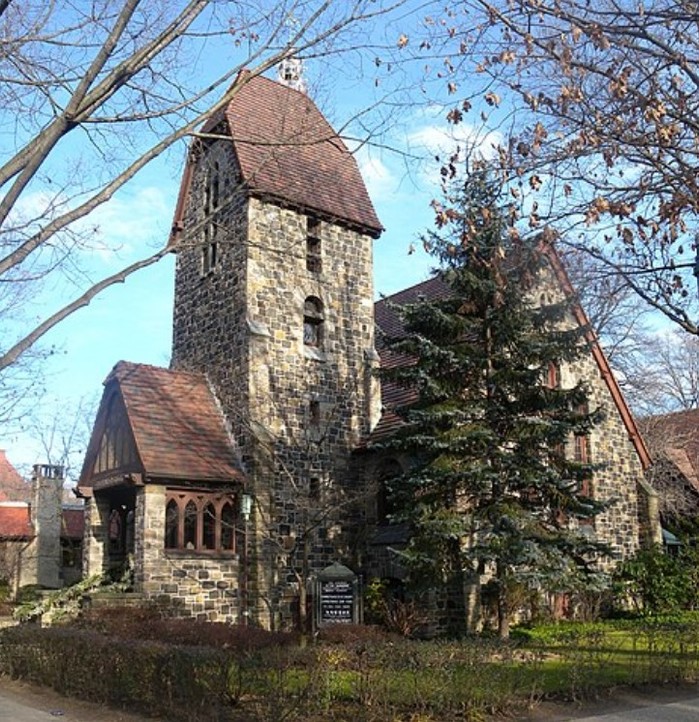The Church-in-the-Gardens
Introduction
Text-to-speech Audio
The stone church on Ascan Ave. in the planned community of Forest Hills in Queens has stood since 1915. The Church-in-the-Gardens came about as a place of worship for those of any faith. Since 2012, the parish has been a self-governing Congregational United Church of Christ. The building was designed by prominent architect Grosvenor Atterbury, a Columbia University graduate. The community was designed as a "garden city" around 1909 by Atterbury and famed landscape designer Frederick Law Olmstead Jr. and is said to be the first of its kind in America. The church building complex is listed in the National Register of Historic Places. The church's archives are open to the public.
Images
Main entrance to Church-in-the Gardens with half-timbered cross design, in 2009 photo (Hoff & Mooney)

Church-in-the-Gardens (green arrow) & 3 other buildings in complex on modern map, NRHP nomination (Hoff & Mooney 2009)

2009 view down into interior of Church-in-the-Gardens (Hoff & Mooney)

Church-in-the-Gardens main entrance along Ascan Ave. with tower in 2011 photo (Jim.henderson)

Backstory and Context
Text-to-speech Audio
Forest Hills Gardens originated as an early twentieth-century bedroom community that soon had access to Manhattan via a new Long Island Railroad station (that opened in 1912) and a trolley (1914). The Russell Sage Foundation bought 142 acres of land in Queens in 1909 from the Cord Meyer Development Corporation's 600 acres (the corporation coined the name "Forest Hills"). Mrs. Olivia Slocum Sage established the philanthropic foundation after her financier husband's death in 1907. Her lawyer, Robert W. DeForest served as foundation president. In 1909, the Forest Hills area was still farmland producing fruit, vegetables, and dairy products, along with a small village. Famed architect Grosvenor Atterbury and landscape designer Frederick Law Olmstead Jr. were the driving forces behind the design of Forest Hills. The men were inspired to create a suburb in the new English garden style, to create a "garden city" to contrast with the overcrowding and boring grid system of cities. A 1912 brochure described Forest Hills as a place for those with "moderate income and good taste" who "are tied close to the city by the nature of their occupation." Forest Hills is thought to be the first "garden city" in America.
Mrs. Sage donated funds to build the community a church; Forest Hills locals raised funds to buy the lot, four blocks from the train station. The church was dedicated on October 19th 1915. The original pipe organ, also donated by Mrs. Sage, dated to 1916 and has been replaced several times. A carillon - donated by you-know-who in 1916 - replaced the bell rung manually from inside the church. The church building, designed by Atterbury, is connected by a breezeway to the Community House, built to the rear of the church in 1926, and the Parish Hall, constructed on Ascan Ave. in 1953. The 1929 Parsonage on Aslan Ave. was rented out by the church by 2008. The rectangular church building is loosely Tudor style with a prominent tower and spire on the west end and a Norman style roofline in red clay tiles. The church is made of native fieldstone. Inside the church are huge beams of cypress, stained dark brown. The pastor's office used to be up in the loft of the bell tower; the office moved to the new Parish Hall in 1953 and the loft now holds the church archives.
The church interior was remodeled slightly in the 1930s by moving original pieces, like the organ console. The carillon was replaced at least once and no longer functions; instead, a recording of bell chimes is used (you can hear it in the video linked below). In the 1990s, the church hired professionals to restain the exterior wood trim a dark brown like the original' the mortar was repointed, matching the existing color and texture.
Sources
Hoff, Susannah. Mooney, Elizabeth. NRHP Nomination of The Church-in-the-Gardens. National Register. Washington, DC. National Park Service, 2009.
Perlman, Michael H. Legendary Locals of Forest Hills and Rego Park. Mt. Pleasant, SC. Arcadia Publishing, 2015.
The Church-in-the-Gardens. History, The Church-in-the-Gardens, About Us. Accessed May 23rd 2022. http://thecitg.org/info/.
New York State Cultural Resource Information System (NYS CRIS): https://cris.parks.ny.gov/Default.aspx
NYS CRIS: https://cris.parks.ny.gov/Default.aspx
NYS CRIS: https://cris.parks.ny.gov/Default.aspx
https://en.wikipedia.org/wiki/The_Church-in-the-Gardens#/media/File:Church_in_the_Gardens_UCC_50_Ascan_Av_jeh.jpg
